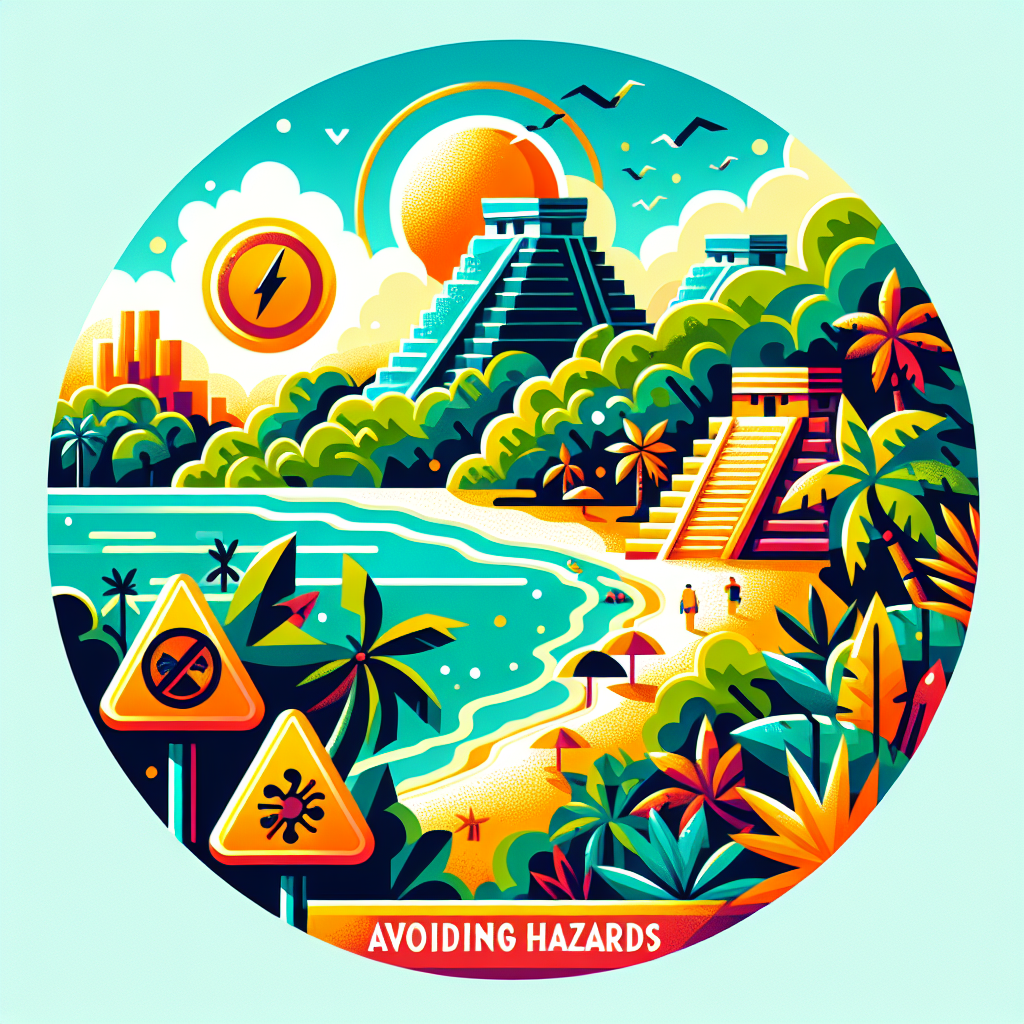Tulum, known for its breathtaking beaches, Mayan ruins, and vibrant natural areas, attracts millions of visitors every year. While its charm is undeniable, it’s essential to be aware of the potential hazards that lurk in these tropical paradises. Below, we delve into crucial safety aspects to consider while exploring Tulum’s stunning natural environments.
### 1. Wildlife Encounters
#### A. Understanding Local Fauna
Tulum is home to diverse wildlife, including both harmless and potentially dangerous animals. Among the most notable are crocodiles, jaguars, and various snake species. Visitors should exercise caution near lagoons and mangroves where crocodiles may be present.
#### B. Avoiding Dangerous Wild Animals
While jaguars are elusive, spotting them in the wild is not impossible. It’s imperative to respect their habitat by avoiding loud noises and keeping a safe distance. Additionally, coral snakes, if encountered, should never be approached.
### 2. Water Safety
#### A. Beaches
The beaches of Tulum may seem idyllic, yet they can pose significant risks. Strong currents and undertows are common, especially during the rainy season. Always swim in designated areas, and heed warning flags indicating rough water conditions.
#### B. Cenotes and Natural Swimming Holes
Cenotes are popular for swimming, but they can have hidden dangers such as slippery rocks, sudden changes in depth, and sharp underwater rocks. Visitors should wear water shoes and ensure they know the area before diving in.
#### C. Snorkeling and Diving Risks
Tulum’s coral reefs are breathtaking but can come with hazards. When snorkeling or diving, be aware of not disturbing marine life, which can lead to encounters with stingrays or jellyfish. Wearing protective swim gear such as long-sleeve rash guards helps reduce the risk of stings.
### 3. Tropical Weather Hazards
#### A. Sun Exposure
The sun in Tulum can be unforgiving. Prolonged exposure can lead to severe sunburn and heat exhaustion. Applying high-SPF sunscreen, wearing protective clothing, and taking breaks in the shade are essential precautions.
#### B. Rain and Tropical Storms
Tulum experiences a rainy season typically from May to October. Be prepared for sudden downpours, which can lead to flash flooding. Staying informed about weather forecasts and having a plan in place can prevent dangerous situations.
### 4. Insect Bites and Allergies
#### A. Mosquitoes
Dengue fever and Zika virus are concerns in Tulum due to the prevalence of mosquitoes. Using insect repellent with DEET, wearing long sleeves during dawn and dusk, and staying in accommodations with screens can help minimize the risk of bites.
#### B. Allergies and Plant Hazards
Be aware of local flora, which may trigger allergic reactions. Plants like poison ivy and certain types of ferns can cause skin irritations. Familiarize yourself with local plants to avoid unnecessary contact.
### 5. Navigation and Terrain
#### A. Rocky Paths and Steep Drops
Exploring Tulum’s natural areas often involves rocky or uneven terrain. Wearing sturdy footwear with good traction can help prevent slips and falls. Avoid venturing too close to cliff edges without proper safety measures.
#### B. Getting Lost in Nature
Many natural areas in Tulum lack clear signage. Visitors should carry a map, have a charged phone with GPS, and consider hiring a local guide to navigate safely through jungles and unworn paths.
### 6. Swimming in Lagoons and Rivers
#### A. Understanding Freshwater Risks
While Tulum has many beautiful lagoons, swimming in freshwater bodies can be dangerous due to hidden currents and sudden drop-offs. Always swim with a partner and avoid isolated spots where assistance might be far away.
#### B. Water Quality Concerns
Not all bodies of water in natural areas are safe for swimming. Always check if swimming is permitted and ensure cleanliness before entry; polluted waters can lead to infections or gastrointestinal issues.
### 7. Cultural Respect and Local Laws
#### A. Respect for Nature
Tulum is a community that prizes conservation. Ensure you’re aware of local regulations, especially in protected areas. Picking plants or disturbing wildlife can lead to fines or legal trouble.
#### B. Proper Conduct in Sacred Sites
If exploring sites of cultural significance, like cenotes or ruins, maintain a respectful demeanor. Avoid loud noises, and always follow the guidelines set by local authorities to preserve these treasures for future generations.
### 8. Emergency Preparedness
#### A. First Aid Skills
Basic first aid knowledge is invaluable when exploring nature. Carry a first aid kit equipped with essentials like antiseptics, band-aids, and medications for allergic reactions or stomach issues.
#### B. Emergency Contacts
Familiarize yourself with local emergency services. Having contacts for nearby hospitals or clinics, and understanding how to report emergencies to authorities can be lifesaving.
### 9. Responsible Interactions with the Environment
#### A. Waste Management
Tulum’s natural areas are fragile ecosystems that require careful management. Always dispose of waste appropriately and carry out what you bring with you to minimize your environmental footprint.
#### B. Sustainable Practices
Whenever possible, opt for eco-friendly tours and practices that support local communities and wildlife conservation efforts. Engaging with local guides also leads to a richer experience while benefiting the community economically.
Visiting Tulum requires more than just a sense of wonder; it demands awareness and preparation for the multifaceted hazards present in its natural settings. By embracing a culture of safety and responsibility, visitors can enjoy Tulum’s beauty while ensuring their adventure is both enjoyable and secure.







